
Feature image credit: Mike Rosenberg/All images courtesy of Bob Bert
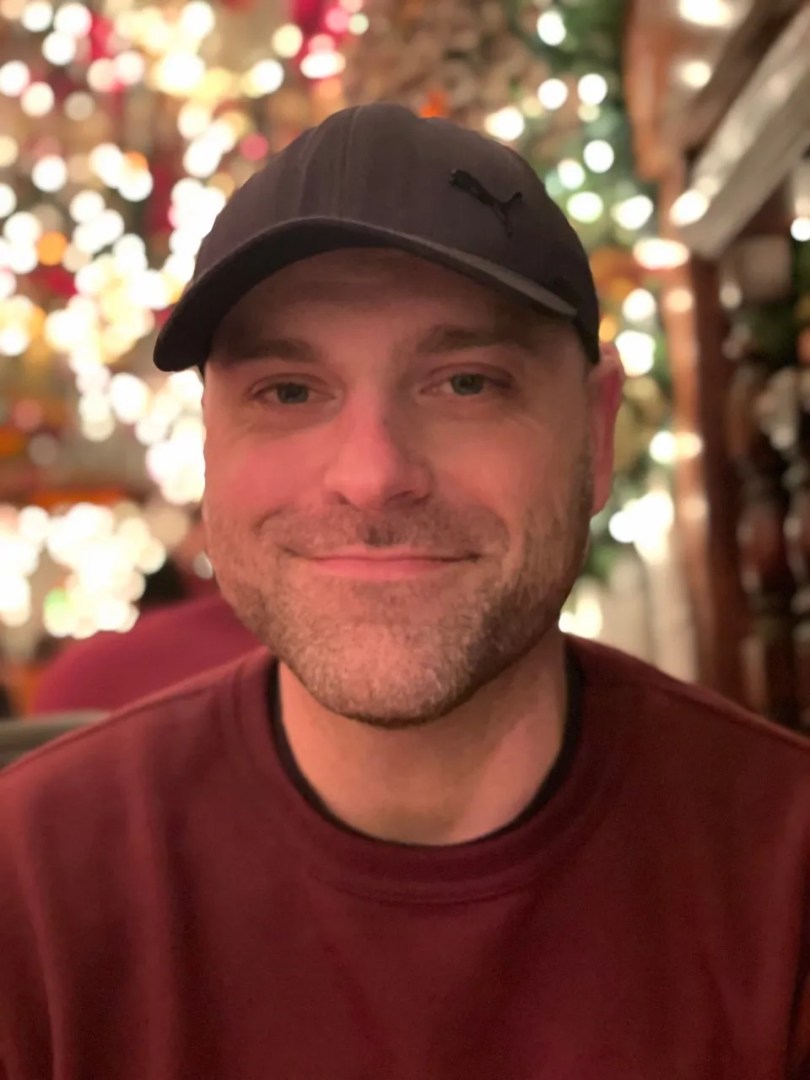
By Andrew Daly
[email protected]
Amongst a buzzing no-wave and visual arts scene, unlikely indie hero, Bob Bert, found a home behind a drumkit.
Growing up in Clifton, NJ, Bert initially had no interest in a career in music. While he harbored a deep passion for rock music in all its forms, Bert’s first love was visual arts.
Bert turned his passion into a career after graduating from the School of Visual Art and steadily began to make a name for himself amidst a deeply creative scene, forging a career as a sought-after fine art silk screener.
In his travels throughout NYC, Bert learned of emerging noise rock bands Swans but was particularly smitten with Sonic Youth’s self-titled EP. By chance, Bert wandered into local NYC record shop Rocks in Your Head and spotted a flyer for a local act looking for a drummer; that act was Sonic Youth.
Being relatively new to the drums didn’t stop Bert from meeting with the members of Sonic Youth, and after a late-night chat at a local eatery, Bert auditioned and soon found himself behind the drumkit at legendry NYC dive, CBGB.
Through various trials and tribulations on U.S. and U.K. soil, Bert manned the sticks for Sonic Youth, culminating in recording one of the acts defining ’80s efforts and fan favorite, 1985’s Bad Moon Rising.
Ever restless and unsure of the band’s future, Bert set a course for horizons anew and ultimately landed with several influential bands in Pussy Galore, Action Swingers, and Chrome Cranks while also forming his own blissfully noisy outfit, Bewitched.
Bert rounded out the decade as he always did, with a distinctive punk flair and DIY ethos in founding BBGun, an old-school zine aimed at giving the veteran drummer a crack at interviewing his heroes and informing the masses.
Bert is increasingly active and lives with no regrets. Still harboring the invigorating spirit that fueled his dreams and passions some 40 years ago. When asked about the legacy of the genre he once helped fuel, Bert quipped:
“Anything that is considered noise rock wants nothing to do with mainstream media, and I’m sure the feelings are mutual.”
As he prepares to hit the road once again, Bert took the time with me to look back on his journey from a local NJ kid, to a touring musician gracing stages across the world, to a journalist chatting with his heroes and beyond.
Andrew:
Growing up in New Jersey, what sort of scene were you exposed to?
Bob:
I grew up in Clifton, NJ, 11 miles from NYC. Typical suburbia. I do remember going into the city on occasion with my family, and I remember being around 7 or so, strolling on 42nd Street with my father in the ’60s, which could leave quite an impression on a youngster.
Andrew:
When did the drums enter the picture for you?
Bob:
I was around 8 when The Beatles were on The Ed Sullivan Show, which of course, made a big impression on everybody. My friend who lived on the next block had a blue sparkle Slingerland drum set and all these drum catalogs that we would look at. I took drum lessons for a year when I was 12 and eventually got a cheap kit of my own set up in the basement to drive my family crazy. One of my biggest influences back then was Charlie Watts. I had the Stones hit album High Tide and Green Grass. Back then, it was all A.M. radio, so I had my little transistor radio waiting patiently for songs like “Good Lovin'” by the Young Rascals, “Psychotic Reaction” by the Count Five, the Stones, etc.
Andrew:
What were some of your early gigs?
Bob:
When I moved out of my house at 18, I never played the drums; being a musician was the farthest thing from my mind. I was pursuing art. When I was in High School in the early ’70s, I was semi-transforming from hippy music to glam. Bowie’s Ziggy Stardust, Roxy Music, Lou Reed’s Transformer, and the Stones’ Exile on Main Street all came out at this time. Anyway, I was really into Andy Warhol, so after High School, I went to the School of Visual Art, where I learned how to be a silk screen printer. I became a professional fine art silk screen printer and ended up printing Warhol’s print editions and paintings up until he died in 1987 while I was in Sonic Youth and then Pussy Galore.
As far as seeing shows, I was 14 in 1969, which is when I started smoking pot, experimenting with psychedelics, and going to concerts. Early shows I remember seeing were The Band with my older brother, Ten Years After, Alice Cooper on the Love It To Death Tour, and The Byrds with Canned Heat on a double bill. I saw The Incredible String Band and Zappa and The Mothers at the Fillmore East. The Kinks were one of the best shows ever. I saw the New York Dolls at Max’s in 1973 and started going to clubs to see them and Wayne County and the Backstreet Boys, Harlots of 42nd Street, etc. In 1975 I discovered CBGB, Patti Smith, and Television playing to like 20 people. I started going there, and Max’s Kansas City like 4 times a week.
As far as playing, I fell into a band accidentally in 1981 called Drunk Driving when I moved to Hoboken. That lasted about 6 months for me, and then came Sonic Youth.
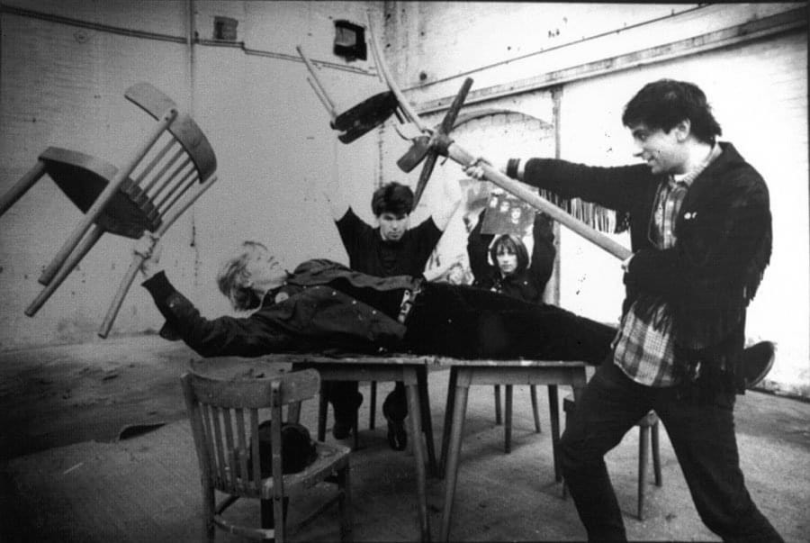
Andrew:
How did you first meet Thurston Moore, Kim Gordon, and Lee Ranaldo? Were you familiar with their debut EP prior to your joining?
Bob:
I read about Sonic Youth in the New York Rocker. They were to be the first band to have a record released on composer Glenn Branca’s label, Neutral Records. I was printing in SoHo at the time and bought their first EP as soon as it came out. I really dug it and went to see them play at the Mudd Club and CBGB with Richard Edson on drums. Sonic Youth recorded that record after only being together for a few months. Richard left to play trumpet in Konk. I went into Rocks In Your Head, where I had bought the EP, and there was a flyer on the wall saying, “Sonic Youth needs a drummer.” I took the flyer off the wall; still have it. I gave them a call and met them at Leshko’s Diner on Avenue A, talked a bit about music, and then went over to Michael Gira’s cement bunker on Avenue B, and I auditioned.
Andrew:
How did you ultimately join Sonic Youth, and can you recall your first gig?
Bob:
They called me back, and we started rehearsing and writing the songs for the first album, Confusion is Sex. My first show with them was at CBGB on Nov 3rd, 1982, with Swans and Don King, which had ex-members of the band that invented no-wave, Mars. This is also the night that I met my hero Lydia Lunch who later recorded the song “Death Valley 69” with us, and I’ve been playing in her band Lydia Lunch Retrovirus for the past 10 years.
Andrew:
Sonic Youth shared a rehearsal space with Swans, right? What memories do you have from the band’s early years in that space and around the NYC scene?
Bob:
It was pretty intense. The East Village was a totally different world back then; very scary, like a war zone. That windowless bunker where Michael lived was bizarre; not much in the living space other than empty 40s of beer and Michael’s drawings. Swans were the loudest pummeling band on the planet. The early ’80s scene was sort of an extension of the no-wave movement, maybe adding a little rock to the mix. The bands around that time besides Swans and Sonic Youth were Live Skull, Rat At Rat R, UT, etc.
Andrew:
Some have insinuated that your relationship with Thurston Moore was rocky early on. If there were issues, where did they stem from, and what led him to ask you to leave the band?
Bob:
My relationship with Thurston was never rocky; in fact, I saw him last night. I’d only been seriously drumming for less than a year when I joined Sonic Youth, and my approach was very minimal. We went on the first tour down South with Swans soon after I joined. It was a crazy experience; 10 people in a van with no seats and a U-Haul. I was the only one who didn’t smoke cigarettes, and it was like traveling in a smoke cloud. Both bands had 1 EP out and were pretty much unknown outside of Manhattan. This was called the Savage Blunder Tour.
The Savage Blunder Tour was in 2 parts, with a couple of weeks in between. First down South and then out to the Midwest, which was based around a show at First Avenue in Minneapolis, which was being sponsored by the Walker Arts Center. Both bands played on the stage that Prince made famous to a big, pretty much empty room. After the first leg of the tour, Kim called me up and fired me. They got a drummer whose name escapes me and played a show at the Mudd Club.
Andrew:
Eventually, you were asked to rejoin. Take me through that sequence.
Bob:
They got a drummer whose name escapes me and played a show at the Mudd Club. The new drummer couldn’t tour, so after they canned me, they asked me to do the second leg of the tour. After we got back, they got Jim Sclavunos, who played with Teenage Jesus & the Jerks, 8-Eyed Spy, and the Cramps, and has been with Nick Cave and the Bad Seeds for the past 30 years or so. Jim only lasted a few months with Sonic Youth, played 3 local shows, and recorded the bulk of the first album; Confusion Is Sex. I went to 2 of the shows he played and told them, “My approach to “Making The Nature Scene” was much cooler than his,” so I ended up playing on the recording of that song which was my first ever released recording. Meanwhile, I was rehearsing with 2 Hoboken women, Alice Genese (Psychic TV) and Karyn Kuhl (The Karyn Kuhl Band), and really improving my drum skills.
One day I got a call from Thurston saying, “Jim split. Would you like to come back?” Alice and Karyn formed a band called Gut Bank. When I rehearsed again with Sonic Youth, they were psyched at how much better I had gotten. We played at the Speed Trials Festival, which was at White Columns Gallery. It was May 4th through 8th, 1983, and featured Sonic Youth, Swans, Lydia Lunch, Live Skull, the Fall, Beastie Boys, and others. This was my first show back in the band. Lee and Thurston were leaving the next day to tour Europe with Glenn Branca while setting up the first Sonic Youth tour there. After the Speed Trials show, we went to the bar across the street, and they asked me if I would go to Europe with them. I made them promise that it wouldn’t cost me a penny and they wouldn’t fire me when we got back. [Laughs]. This was Sonic Youth’s first tour of Europe.
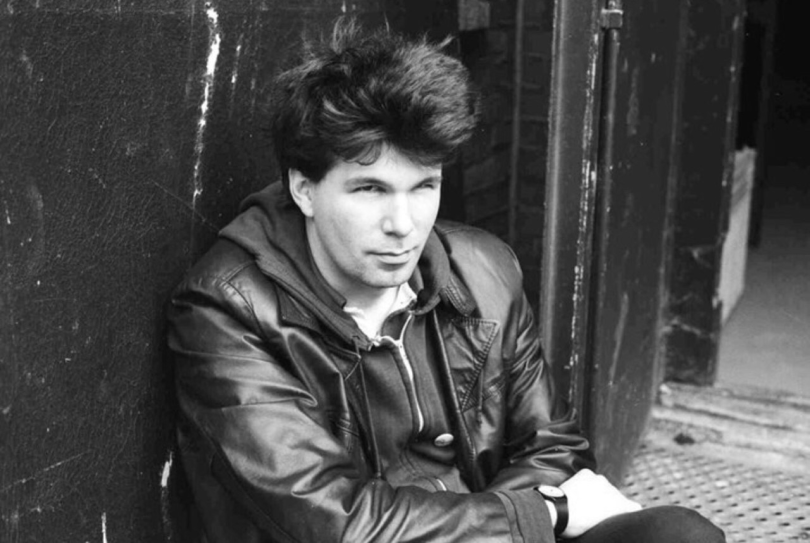
Andrew:
In your early recordings with Sonic Youth, given the initial issues, was your drumming micromanaged in the studio?
Bob:
Like I mentioned before, “Making The Nature Scene” was my first recording. There is a CD that was released called Live In Venlo ’83 where you can hear my approach to the songs on Confusion Is Sex which is way different than Jim Sclavunos. We played at Danceteria for a gig that Lydia Lunch set up, which was her doing spoken word on a different floor while Sonic Youth and Swans played the main stage. The promoter was Ruth Polsky, who later on died by getting hit by a cab while waiting in line to get into the Limelight. Ruth was drunk and paid Lydia for the show twice. Sonic Youth took that pay and went into Wharton Tiers Fun City recording studio and recorded the Kill Yr Idols EP live to 2-track. Sonic Youth created songs together and split the songwriting publishing equally. There was no micromanaging or anything like that.
Andrew:
Early on, Sonic Youth had a unique relationship with the NYC press. What was the root of those tensions?
Bob:
Robert Christgau was the music editor of the Village Voice at the time. I personally was never a fan of his reviews, often disagreeing with his opinions. He wrote a bad review of a Sonic Youth show at CBGB, and Thurston wrote a letter to the Voice, ripping him apart. There’s a line in Kill Yr Idols, “I don’t know why you try to impress Christgau, ah let that shit die and head for a new goal.” Later on, Christgau wrote something to the effect of, “The day Steve Shelley joined Sonic Youth, they became a good band.” [Laughs]. Of course, when he started writing good things about the band, their opinion of him changed.
Andrew:
What is your recollection of Sonic Youth’s infamous London show in 1983?
Bob:
Back in those days, in order to get anywhere at all, you had to get into the British music papers. England was the size of Connecticut and had 3 weekly music papers, NME, Sounds, and New Musical Express. We were asked to play a show with the Australian band SPK, who started an avant-garde industrial band but at this point were more like a disco S&M band wearing all patent leather and swinging chains around onstage. So, we travel, losing money to get to this show, and Danielle Dax was also on the bill. So, first, there is a big scene over whose going on first; we were saying since SPK invited us, we should go on before them.
We lost the argument and had to go on first. Everything went wrong; the drums were falling apart, there were technical difficulties, and Thurston just went nuts sliding the monitors all over the stage. Three-quarters of the way through the set, they brought down this wooden curtain on us in the middle of a song. We felt it was the worst show possible and got on the plane home the next day, totally bummed thinking we blew it. Of course, we were still the best thing on that bill, and they never saw or heard anyone like us before, so the papers came out a week later with raves, and suddenly we were drawing more people at home.
Andrew:
Bad Moon Rising is one of my favorite Sonic Youth records. Can you recollect its inception and recording?
Bob:
Thank you, I hear that a lot; it definitely stands out as being a bit different than most of their other albums. I can’t really remember all the details of its inception, but it ended up being sort of a concept album in a weird way, and for a while, the songs were performed in the same order. It was recorded at Martin Bisi’s studio in Brooklyn, who at the time had recorded some cool early hip-hop stuff, including Herbie Hancock’s “Rockit.” Bad Moon Rising was the first full album that I played on, and while I’ve played on at least 30 since then, it remains in print, and I still collect royalties from it. Who would have thought?
Andrew:
What ultimately led to your departure from Sonic Youth, and were there any regrets given the success that followed?
Bob:
I went to Europe with them 3 times for 6 weeks at a time, not making any money and sleeping on cold floors. They were making all these big plans, and I just thought it was time to try other things. The last tour I did with them was opening for Nick Cave and the Bad Seeds on their first tour. I played 90 shows with Sonic Youth altogether. I have no regrets at all. Their real success didn’t happen for another 5 years, at which point I was in Pussy Galore. At the time, I would have never imagined that there would be an MTV 120 minutes or a big alternative rock scene. I never imagined that they would become so popular around the world. The fact that we’re still talking about them today is sort of mind-blowing.
Andrew:
When you reflect on your time in the band, was working with Thurston Moore and Kim Gordon difficult, given their strong opinions and relationship?
Bob:
No, working with Sonic Youth wasn’t difficult at all; everything you hear me play on drums is my own input. I believe my input was valued. I was never not good friends with any of the members. I never see Kim, who lives in L.A., but I see the other three quite often.

Andrew:
From there, walk me through your joining Pussy Galore. What did Pussy Galore represent artistically for you that perhaps Sonic Youth did not?
Bob:
After I left Sonic Youth, Thurston made up a story to the British press that I had a new band called Bewitched. So, I took the idea and ran with it as my experimental side project. Eventually, it turned into a real band, and we ended up going on tour with Sonic Youth in 1990 for the Goo Tour. We got bumped off the tour for the west coast leg for some band called Nirvana. One night I went to the Cat Club to see my favorites, Einsturzende Neubauten. Kim and Thurston were there, I was hanging with them, and I mentioned that I was getting itchy to play again. They told me about this new band that just relocated from D.C. to NYC called Pussy Galore. Jon Spencer, Julie Cafritz, and Cristina Martinez were standing a few feet away. I met them that night, then not long after, I was hanging outside CBGB, and Jon came over to me and handed me a copy of their self-released EP that they had just put out called Groovy Hate Fuck. I asked him if he needed a drummer, and he wrote his number on the record. I loved their concept of combining industrial metal percussion with ’60s garage rock creating something new and radical.
Andrew:
Going into the studio for the Right Now! sessions, what was your approach given the band’s eclectic sound?
Bob:
Unlike Sonic Youth which was more of a democracy, Pussy Galore was Jon’s vision. We planned out the drum kit, which was part drums and part junkyard metal. I definitely contributed some beats and ideas here and there, but it was Jon’s trip. It was a blast. I am currently playing in Jon Spencer and The HITmakers. We have played over 180 shows around the world at this point. We are going back out in October and November in support of the new album; Spencer Gets It Lit. We play 3 or 4 Pussy Galore Songs in the set.
Andrew:
On Dial “M” for Motherfucker, rather than specify who played what, each musician is credited as playing “instruments.” What was the reasoning behind that?
Bob:
The band was pretty much over at that point when the cover art was put together, especially that line-up. It also says Pussy Galore “was.” [Laughs].
Andrew:
Pussy Galore seemed to be peaking with Historia de la Musica, but the band ended soon after that. What led to the fracture?
Bob:
After Dial “M,” Pussy Galore did a long tour of the U.S. with me, Jon, Neil Hagerty, and Kurt Wolf, no pussy. The last show of the tour and the band was at CBGB; it was recorded on 16-track and released years later as Live In The Red by In The Red Records. The band was over. Jon called me and asked if I wanted to continue with just me, him, and Neil. We recorded La Historia in a school classroom where we had rehearsed and dug the sound. We rented recording equipment, and the sessions were very loose and fun, not as rehearsed out as previous recordings; some of the songs were made up on the spot. We were all set to play London; Neil Hagerty split for San Francisco without telling us and made that Royal Trux album Twin Infinitives. So, then there were 2.
Andrew:
From there, you joined Action Swingers, right? How did you enter the fold?
Bob:
Yes. Action Swingers already existed; one day, I got a phone call from Thurston saying that he and Julie Cafritz were playing that night at CBGB with this guy Ned Hayden in the Action Swingers, and he asked if I would drum. I couldn’t pass up playing with two ex-band members, so I said, “Yes.” I learned the songs somewhat during soundcheck and rocked the show. I stuck it out while members came and went. Recorded the self-titled red album with Ned, Julie, and Pete Shore, and then later did a tour of England at the height of Grunge in ’92 with Howie Pyro (RIP) on bass and Bruce Bennett on guitar. We recorded the EP More Fast Numbers in England and opened for The Ramones when we got home. I stuck around for a few more line-ups but was more into my own band, Bewitched, at the time. Action Swingers definitely helped me to be able to play fast. It was a crazy scene.
Andrew:
When you look back on Pussy Galore and Action Swingers, those two bands came into their own during a steep rise in alternative music’s popularity. To what do you attribute the lack of commercial traction? Was it the refusal to commercialize the overall sound?
Bob:
Pussy Galore was sort of an acquired taste. A band with squealing guitars, no bass, and metal percussion can only go so far. Some people love us, but I don’t think the radio was ready for songs like “Cunt Tease” or “Fuck You, Man.” Action Swingers were sort of self-destructive and not built for success; also, this was the time of Nirvana which overshadowed everything.
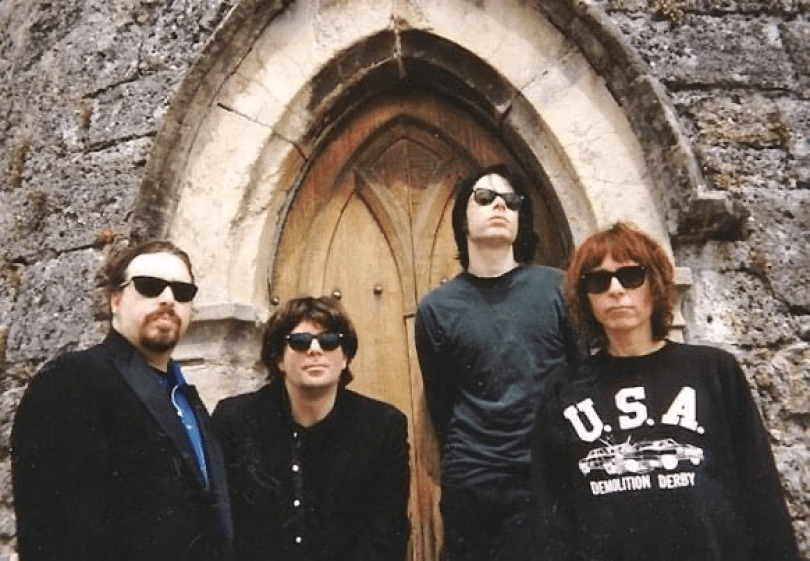
Andrew:
In the midst of all of that, you joined Chrome Cranks as well. What was it about their style that appealed to you most?
Bob:
I was hesitant to join the Chrome Cranks at first but did and ended up playing with them through most of the ’90s, making several records and lots of touring in the U.S. and Europe. We had sort of an ugly breakup and didn’t play for like 15 years. We reformed in 2009, made another album called There Ain’t No Lies In Blood, and went to Europe. And that was it. When the Chrome Cranks broke up in the ’90s, The Knoxville Girls were hatched with me, Jerry Teel, Jack Martin, Kid Congo Powers, and Barry London. We made two albums and toured around; fell apart after 9/11 happened, and no one wanted to get on a plane for a while, and then Jerry moved to New Orleans.
Andrew:
I wanted to hit on Bewitched. What sort of vehicle did it provide for you creatively?
Bob:
Bewitched was my trip; I wanted to see what it was like to be in charge of a project and its creative endeavors. It turned into a real band; I was the singer and would go behind the drums for instrumentals. We had a drum machine and a DJ. It was fun; we made some singles and two albums, Brain Eraser and Harshing My Mellow. We went on tour with Sonic Youth and did shows with The Jesus Lizard, Blues Explosion, the Mekons, etc. I released a compilation CD called The Worst Poetry of 1986-1993. I’m glad I did it; it was a fun learning experience and what I learned was that I’d much rather just drum. Tell me where to be, and I’ll be there.
Andrew:
Harshing My Mellow is a favorite of mine. How did Steve Albini become involved, and what did he bring to the sessions?
Bob:
Wow, thanks; that’s something I don’t often hear, if at all. Steve Albini worked on the Pussy Galore records Right Now!, Sugershit Sharp, and Dial “M” For Motherfucker. He supplied me with the metal cock ring to put on the metal snare for an extra rattle. I was in love with the drum sound on the Jesus Lizard Goat album. Luckily Terry Tolkin (RIP), who was putting the album out on his Label NO. 6 Records, offered to pay for Steve to fly out here to record the album.
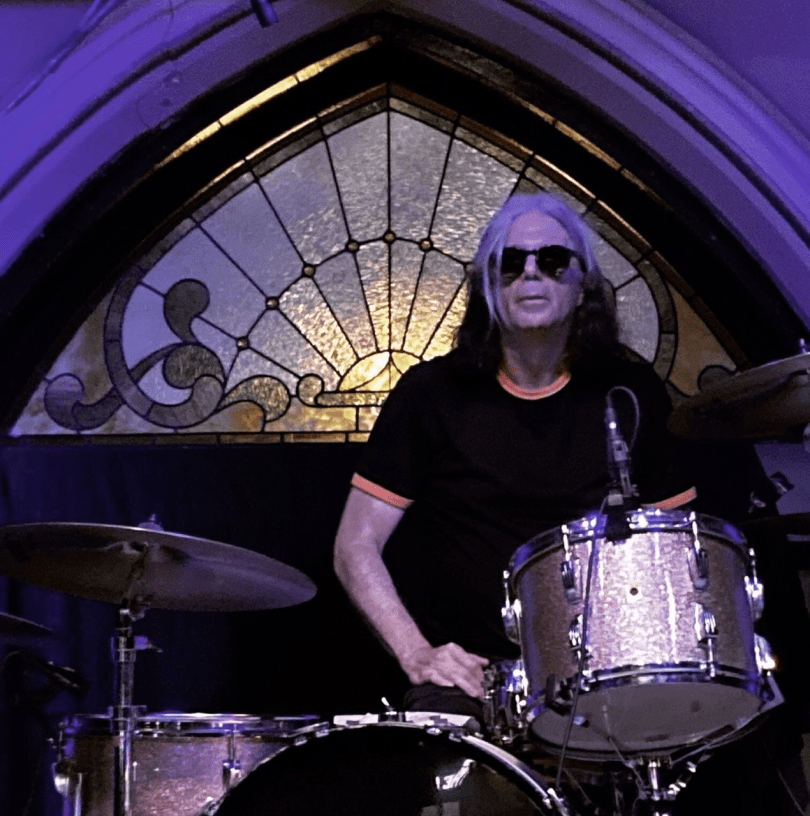
Andrew:
In the late ’90s, you pivoted to journalism by founding BBGun. What led to the decision to pursue that avenue, and what was your inspiration?
Bob:
I’ve always been a magazine junky, so I decided to do BB Gun with my wife, artist Linda Wolfe (RIP). I figured it was a good way to interview artists, musicians, filmmakers, etc., that I had access to and make a zine that I would want to look at. The inspiration was to get lots of free stuff, get invited to shows and parties, and get to talk to people that I was a fan of and wouldn’t otherwise meet.
Andrew:
Which of the interviews you’ve conducted have proved to be the most meaningful?
Bob:
So many: Nancy Sinatra, Cynthia’ Plaster Caster’ Albritton, Elliott Smith, Vincent Gallo, Genesis P-Orridge, Fred Cole, Suicide, James Chance, Richard Hell, and the list goes on. People would open up to me more, and I would ask questions that most interviewers wouldn’t ask. I asked Nancy Sinatra if she had ever had sex with Elvis. [Laughs]. You’ll have to read my book to hear the rest of that story.
Andrew:
You provided a stunning visual of your story through I’m Just a Drummer. What was that process like?
Bob:
Well, I wanted to put out a book of my photos, and then I hooked up with Hozac Books, who inspired me to write stuff for it and did a great job with the layout and getting it out. The 2nd printing is currently sold out, and the third printing, like the second, will have some added content.
Andrew:
In retrospect, how do you characterize and quantify the importance of the NYC noise rock scene?
Bob:
Well, I don’t really know what is considered noise rock. I find it astonishing that in 2022, people are still into bands like Sonic Youth and Swans, as is fact is that the ’70s NYC no-wave scene is talked about in universities and museums around the world. I’m proud to be associated with it to whatever degree.
Andrew:
What are you most proud of, and what’s next, Bob?
Bob:
I’m proud of it all and have no regrets. I’m happy to be alive, healthy, and rocking as a senior citizen. I just want to add that I will be on the road with Jon Spencer and the HITmakers banging on metal in the U.S. in October and Europe in November. October will also see the release of the second Wolfmanhattan album, Summer Forever and Ever, the band I’m in with Kid Congo Powers and Mick Collins. It’ll be out on In The Red Records. Peace!
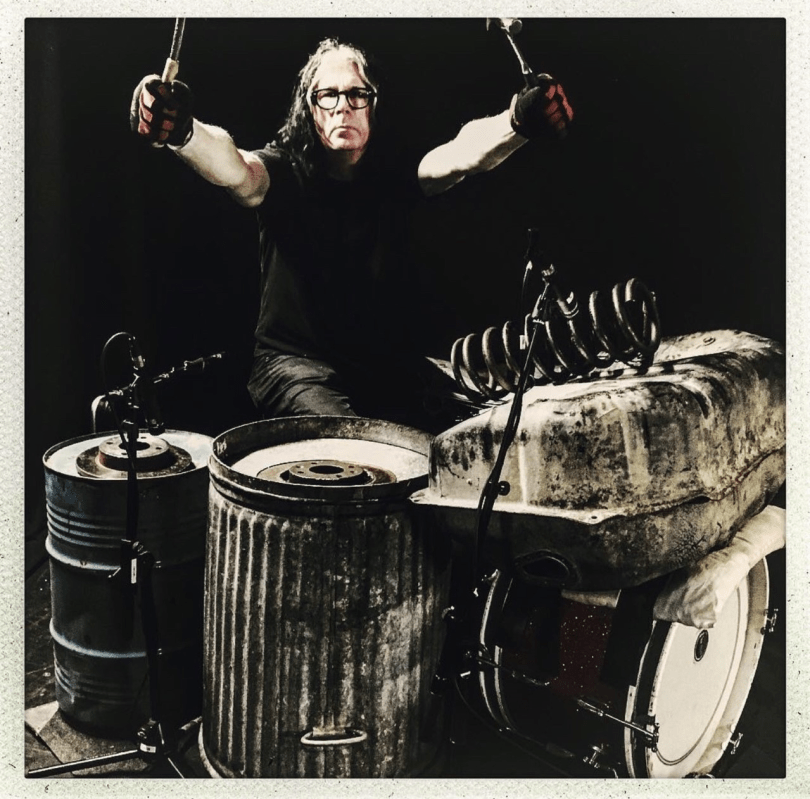
– Andrew Daly (@vwmusicrocks) is the Editor-in-Chief for www.vwmusicrocks.com and may be reached at [email protected]
